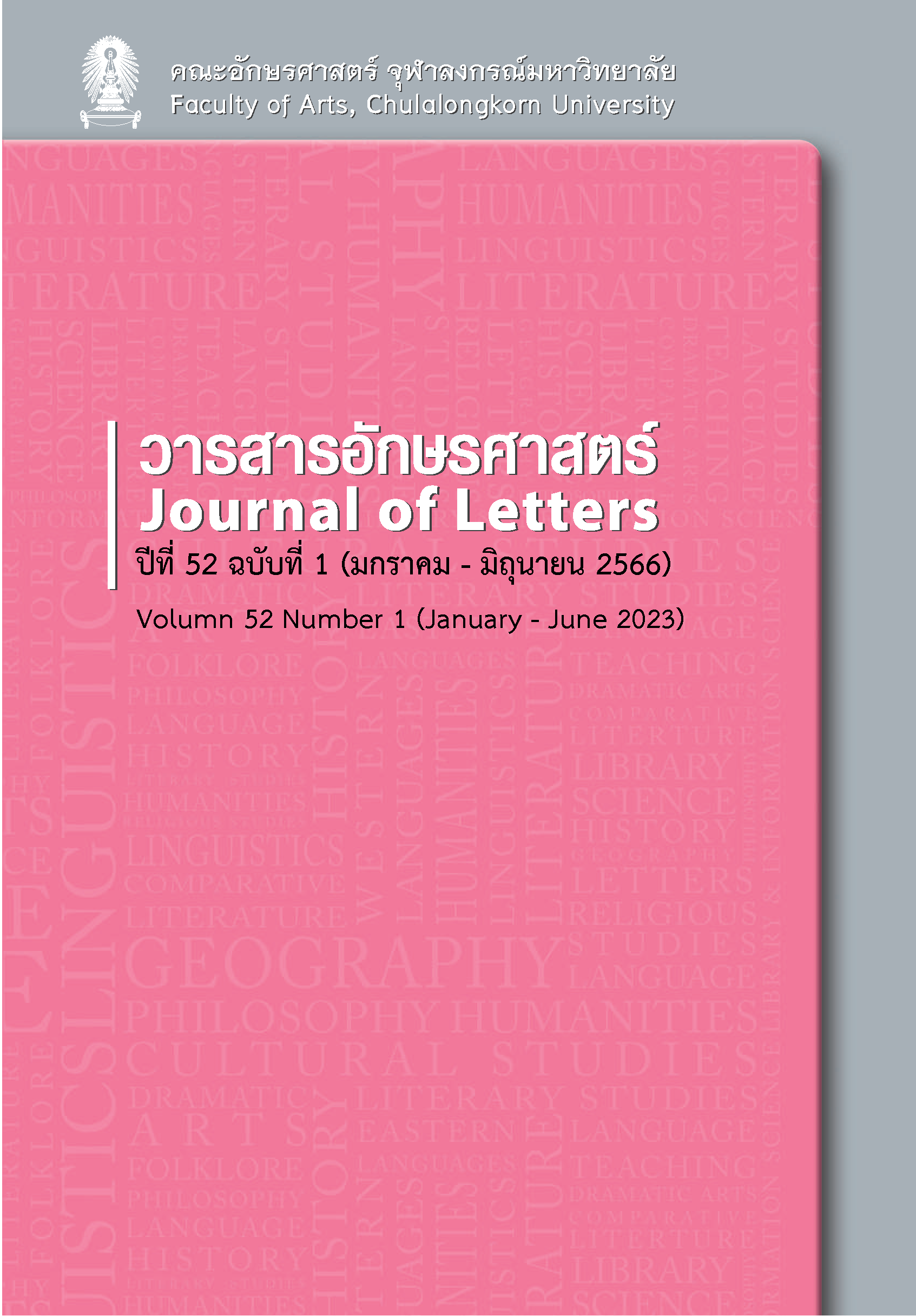Spatial Characteristics of Miao Settlements in Changning, Yunnan Province, China
Keywords:
Miao ethnic group, Settlements, Site selection, Spatial characteristics, Camping wisdomAbstract
This article takes the Miao settlements of Changning in South China as the object of study. Through a combination of fieldwork, field mapping, and graphic language, spatial analysis of the settlements is carried out using ArcMap to objectively and scientifically analyze the spatial characteristics of the settlements. The objective is to seek the existence of an inherent logical relationship between the spatial characteristics, the Miao ethnic group, and the cultural contents of the settlements and to provide a basis for the conservation and sustainable development of traditional Miao settlements. The study concluded that the Changning Miao ethnic group mostly live in high-altitude mountainous areas with slopes of 10°–30° at altitudes of 2,000–2,300 meters. The settlements are mainly composed of mountains, roads, fields, and buildings. The spatial grouping of the settlement buildings is based on the family unit, each occupying fields, buildings, and internal roads, and shows a relatively evenly scattered distribution. The core factor influencing the spatial characteristics of the Changning Miao settlements is the cultural identity of the ethnic group.
References
Foreign Language
Compilation Committee of Changning County, Yunnan Province云南省昌宁县志编纂委员会. (1990). Changning xianzhi (1933-1985) 昌宁县志 (1933-1985) [Changning county annual (1933-1985)]. Dehong Ethnic Publishing House.
Compilation Committee of Changning County, Yunnan Province云南省昌宁县志编纂委员会. (2019). Changning xianzhi (1978-2005) 昌宁县志 (1978-2005) [Changning county annual (1978-2005)]. Dehong Ethnic Publishing House.
Feng, Y. B., Kong, L. Y., Ren, R. Y., & Zhang, L. 冯应斌, 孔令燊, 任瑞英 & 张丽. (2019). Miaozu cunzhai juju kongjiantezheng ji chonggoucelue fengxi 苗族村寨聚居空间特征及其重构策略分析——以贵州雷山县雀鸟苗寨为例 [Analysis of rural settlement spatial characteristics and reconstruction strategy in Miao minority community——Taking Queniao Miao Minority community in Leishan county, Guizhou province as an example]. Xinan shifan daxue xuebao (ziran kexue ban) 西南师范大学学报 (自然科学版) [Journal of Southwest China Normal University (Natural Science Edition)], 44(7), 93–100.
Lei, Y., Zhou, H., Wang, M., & Wang, C. (2022). Analysis on spatial characteristics and the adaptation mechanism of Miao traditional settlement in Qiandongnan, China. Mathematical Problems in Engineering, 2022, Article ID 6293833. https://doi.org/10.1155/2022/6293833
Li, J., Wu, H. T., & Shan, T. C. 李军, 吴海涛 & 单铁成. (2021). Chuantong cunluo lvyou jingji kongjianfengyi jiyingxiang jiyu Jiangxi miaozhai de diaoyan 传统村落旅游经济空间分异及影响——基于西江苗寨的调研 [Economic spatial stratified heterogeneity of traditional village tourism and its effects——Survey of Xijiang Miao ethnic village]. Xibei minzu daxue xuebao (zhexue shehui kexue ban) 西北民族大学学报 (哲学社会科学版) [Journal of Northwest Minzu University (Philosophy and Social Sciences)], 12(4), 49-58.
Shi, C. J. 石朝江. (1995). Miaozu lishishang de wuci qianxibo苗族历史上的五次迁徙波 [Five waves of migration in the history of the Miao ethnic group]. Guizhou minzu yanjiu 贵州民族研究 [Guizhou Ethnic Studies], 1, 120-128.
Su, J. 苏静. (2018). Qiandongnan miaozu chuantong cunzhai xuanzhi zhuti jilishi kongjian shengchang yi congshaxian bashamiaozhai weili 黔东南苗族传统村寨选址、主体及历史空间生产——以从江县岜沙苗寨为例 [Space production of the Miao traditional village in Qiandongnan——A case study of Basha Miao minority community]. Zhongguo nongshi 中国农史 [Agricultural History of China], 37(5), 132–139.
Writing Group of a Brief History of the Miao《苗族简史》编写组. (1985). Zhongguo shaoshu mingzu jianshi congshu中国少数民族简史丛书 [A brief history of China's ethnic minorities series]. Guizhou Nationalities Publishing House.
Xie, R., & Bao, R. 谢荣幸 & 包蓉. (2017). Guizhou qiandongnan miaozu juluo kongjian tezheng jiexi 贵州黔东南苗族聚落空间特征解析 [Analysis of spatial characteristics of Miao settlement in Qiandongnan, Guizhou province]. Chengshi fazhan yanjiu 城市发展研究 [Urban Study], 4(8), 52–58.
Yang, Y., Hu, J., Liu, D. J., Jia, Y. Y., & Jiang, L. 杨燕, 胡静, 刘大均, 贾垚焱 & 蒋亮. (2021). Guizhousheng miaozu chuantong cunluo kongjian jiegou shibie ji yingxiang jizhi 贵州省苗族传统村落空间结构识别及影响机制 [Spatial structure identification and influence mechanism of Miao traditional villages in Guizhou province]. Jingji dìli 经济地理 [Economic Geography], 41(2), 232-240.
Zhang, J. 张洁. (2022) Shehui zhuanxingqi chuantong cunluo kongjian de leixing jibaohu 社会转型期传统村落空间的类型及保护 [Types and conservation of traditional village space amid social transition]. Zhongguo wenhua yichan 中国文化遗产 [China Cultural Heritage], 1, 98-101.
Zhou, Z. X. 周政旭. (2016). Jiyu wenbenyukongjian de Guizhou leigongshan diqu miaozu shandi juluo yingjian yanjiu 基于文本与空间的贵州雷公山地区苗族山地聚落营建研究 [Research on the Miao's mountainous settlement construction in Leigong-Mountain area Guizhou province: Based on text and space material]. Guizhou minzu yanjiu 贵州民族研究 [Guizhou Ethnic Studies], 37(5), 120-127.
Zhou, Z. X., Sun, T., & Qian, Y. 周政旭, 孙甜 & 钱云. (2020). Guizhou qiandongnan miaozu juluoyishi yu gonggong kongjian yanjiu 贵州黔东南苗族聚落仪式与公共空间研究 [Study on the interaction between ritual and public space in Miao settlement in Southeast Guizhou]. Guizhou minzu yanjiu 贵州民族研究 [Guizhou Ethnic Studies], 41(1), 75–80.
Downloads
Published
How to Cite
Issue
Section
License

This work is licensed under a Creative Commons Attribution-NonCommercial-NoDerivatives 4.0 International License.
Copyright and plagiarism
Authors are responsible for obtaining permission to use copyrighted materials from copyright owners. Authors are responsible for observing requisite copyright law when quoting or reproducing copyrighted materials. Quotations and reproductions of content from other published sources must be accompanied by a reference and all sources should be clearly listed in the references section. Quotations and reproductions of content from external sources without due attribution could be considered a severe infringement of academic conduct and may constitute a legal offence under the Copyright Act of B.E. 2537. Any legal ramifications arising from the infringement of copyright regulations would be the sole responsibility of the author(s).



